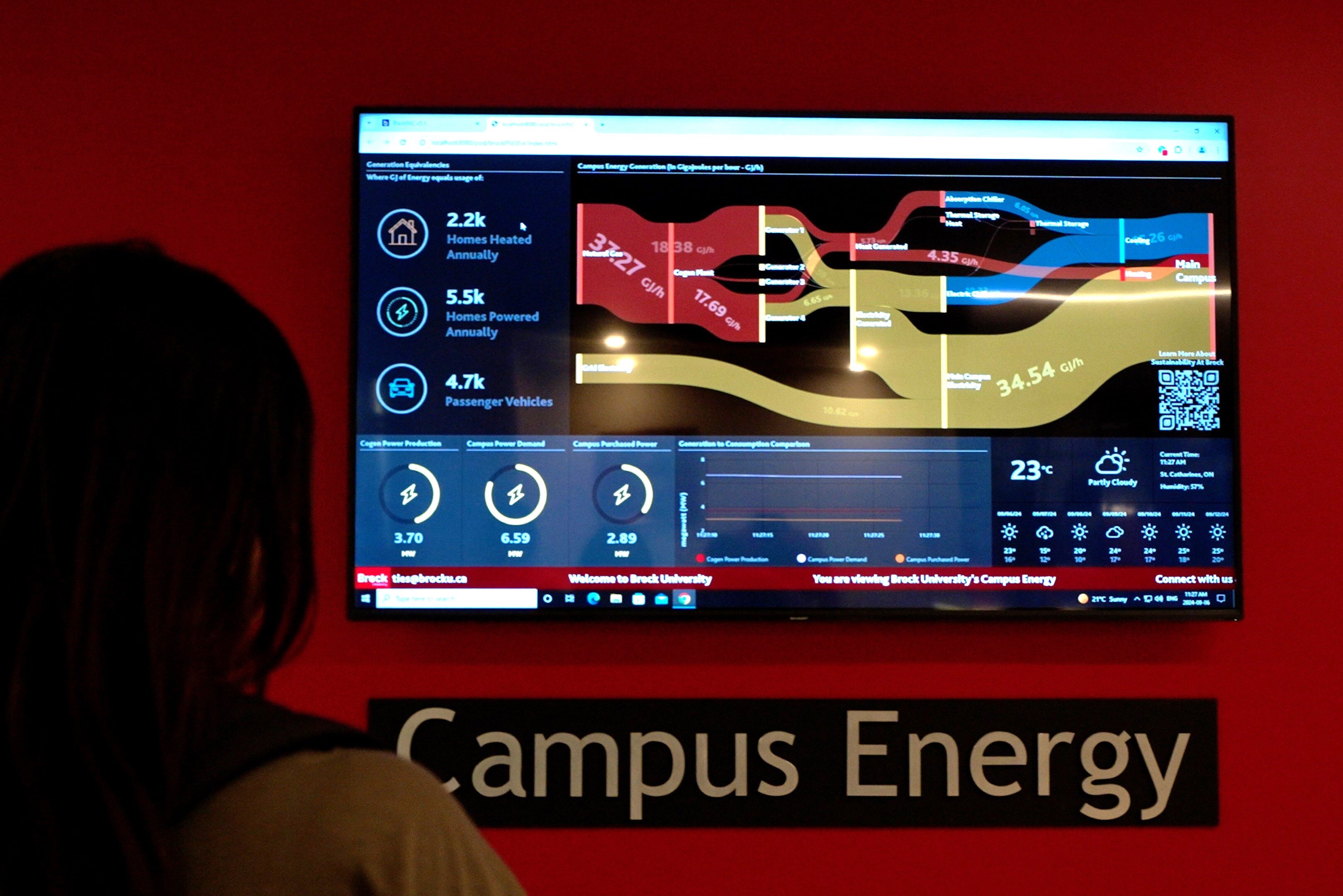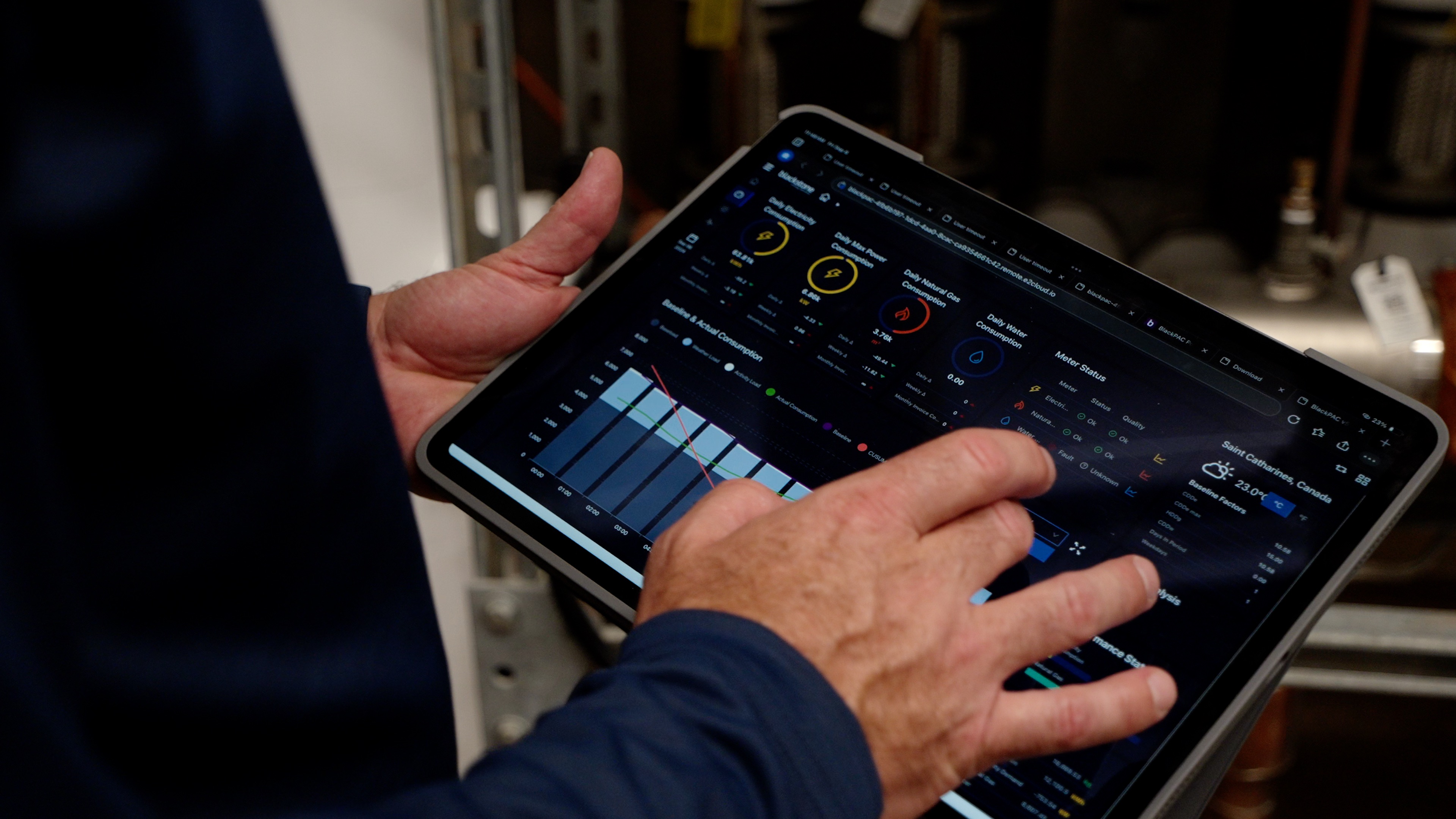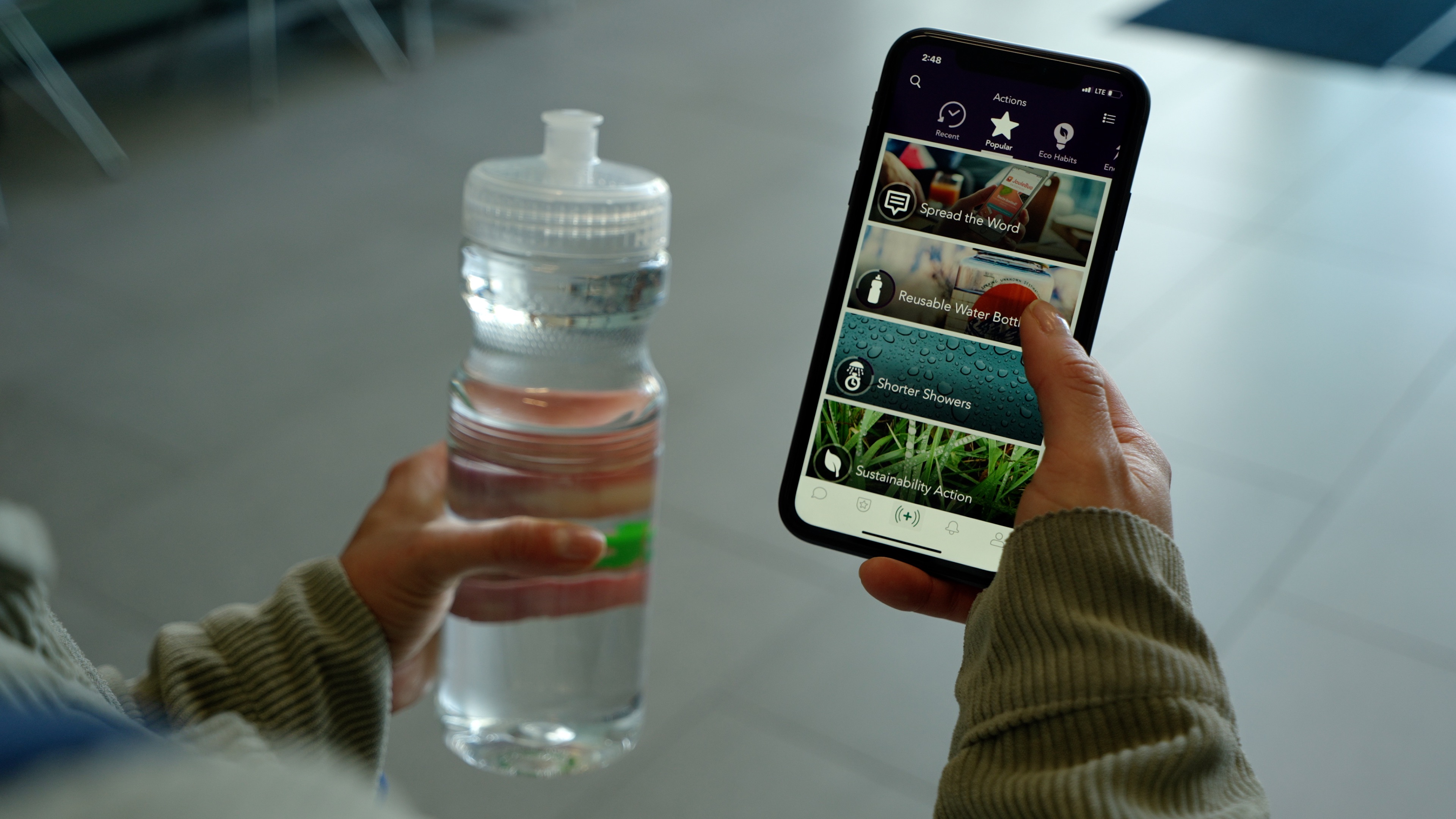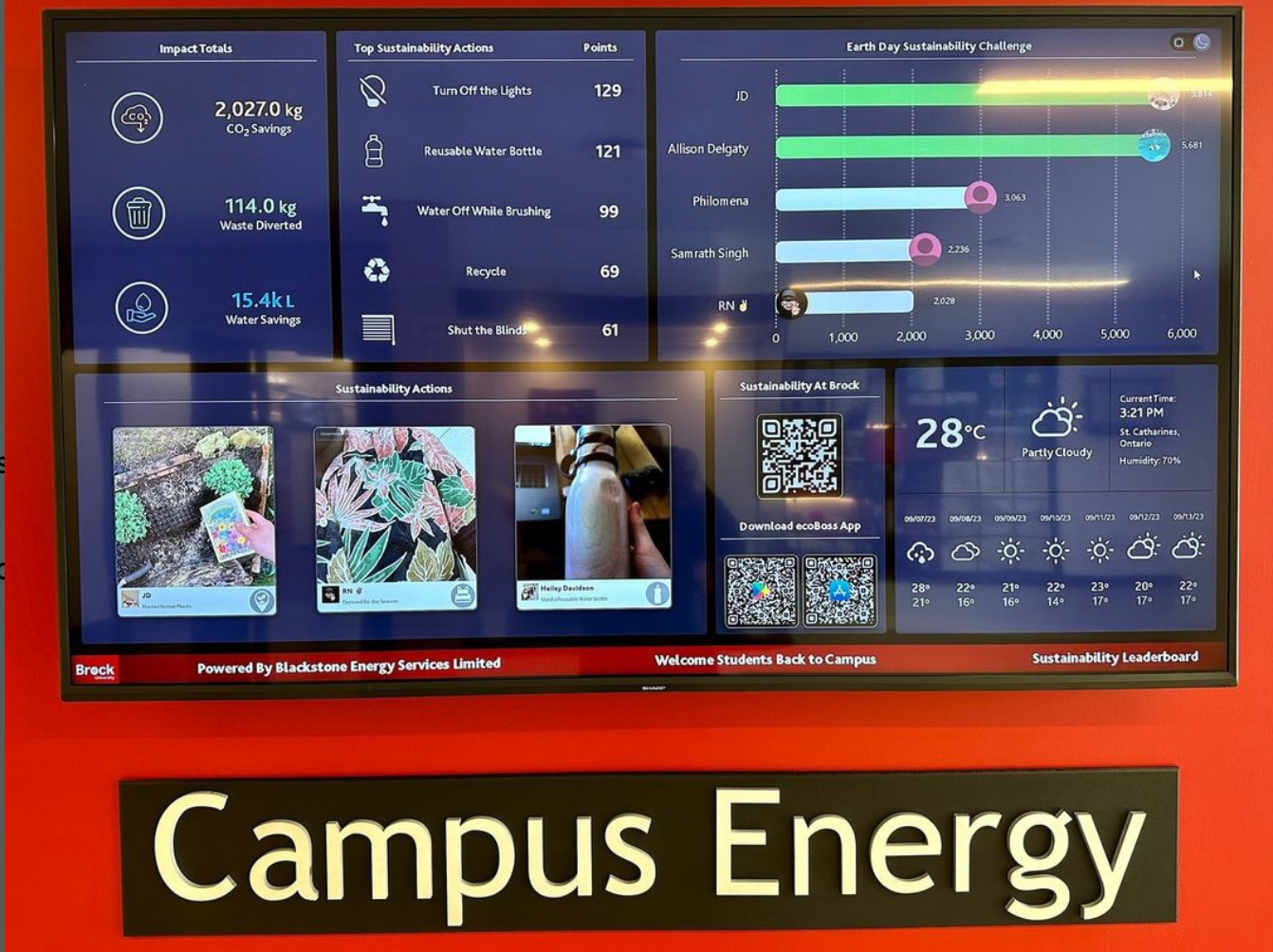Blackstone Energy’s blackPAC™ Drives Decarbonization at Brock University
Projects Sponsor
In 2021, Brock University sought a partner to help deploy an integrated energy management system to optimize, manage and provide real-time visibility into building energy consumption data across their main campus. Initial objectives included automated utility billing and verification, customizable dashboards displaying real-time energy data, and active building performance monitoring. Having previously provided carbon advisory, electricity advisory, and electric vehicle installation services, Blackstone was a natural fit, already familiar with Brock’s sustainability team and goals. Shortly after they were awarded the project, it became clear that their blackPAC™ solution could also be utilized for additional energy management and broader engagement initiatives.
 Blackstone conducted initial discovery workshops with Brock’s key stakeholders to define use case criteria and requirements. This included comprehensive analyses of data and systems, as well as conceptual development of software architecture, security, functionality and constructability.
Blackstone conducted initial discovery workshops with Brock’s key stakeholders to define use case criteria and requirements. This included comprehensive analyses of data and systems, as well as conceptual development of software architecture, security, functionality and constructability.
This work with the team at Brock resulted in a complex internet of things (IoT) engineered design and integrated hardware/software system that connected numerous internal, external and blackPAC systems in a custom-built solution whose effects are felt throughout the University.

Even with Blackstone’s prior experience, no project of this scale is without hurdles to be overcome. Blackstone had to ensure that the system met Brock’s cybersecurity requirements, and the team had to develop an architecture in which all the involved systems communicated and transferred data effectively.
That last one was a major challenge – there were a number of communication protocols, network configurations, hardware, diverse systems, and big data sets that needed to interact with blackPAC. Blackstone and Brock’s ITS team addressed this pre-emptively by coordinating efforts, discussing ideas together, testing possible solutions and ultimately designing an effective solution that satisfied ITS’s requirements and blackPAC’s needs.
Another notable challenge was gaining the required access to Brock’s vast IT network. Connecting and managing a massive dataset could have posed a major obstacle for the project timeline, but collaborating with Natural Resources Canada’s RETScreen Development team, Blackstone created a blackPAC data connector for seamless data exchange, bypassing traditional system limitations to ensure efficiency in the implementation process.

Now, Blackstone’s advanced algorithms allow the university to better utilize the big data sets generated by the Building Automation System (BAS) and the District Energy System (DES), which are collected via the SCADA system blackPAC integrates with.
By digitizing and automating utility bill management, the system establishes a crucial energy baseline, turning a once time-consuming process into one more effectively managed through blackPAC. Freed from spending so much of their valuable time on data collection, Brock’s energy team has new opportunities to seek out more prospective energy projects and grants.
In the meantime, the blackPAC liveICI module allows Brock to track grid peaks and visualize campus demand in real-time. The module historically achieves over 98% peak prediction accuracy. This enables timely demand management actions, such as curtailing usage and modifying the operation of the DES, resulting in a significant reduction in global adjustment charges and utility bill costs.

And “felt throughout the university” doesn’t just mean “felt by university staff.” All too often, energy efficiency and GHG-reduction projects are largely invisible and misunderstood by those who lack technical knowledge or awareness of energy systems. So, to engage the broader Brock community, Blackstone developed three public-facing dashboards, offering dynamic visualizations of carbon footprints and energy usage. Blackstone’s Sankey chart showing the real-time operation of the DES assets is also used as an education tool during DES tours to the campus and broader Niagara communities, as part of Brock’s “campus as a living lab” initiative.
To kick off the launch, Blackstone introduced their ecoBoss Environmental Sustainability Challenge mobile app, where students, faculty, and staff compete to reduce the University’s carbon footprint. This directly supports Brock’s endeavour to create a more sustainable lifestyle on campus and beyond as students graduate and carry the sustainable behaviours learned at Brock into their everyday lives.

Blackstone continues to be responsible for the ongoing maintenance, support, optimization, and monitoring of the system to verify expected performance – and verify they have.
Brock is currently utilizing four unique blackPAC modules to manage their campus-wide energy profile and drive decarbonization efforts. To date, blackPAC has tracked an estimated $1.5M in electricity cost savings, carbon reductions of 5,000 tonnes of CO2 equivalents, and $1.5M in carbon tax savings.
With a close eye on their assets, the University has been able to focus on proactive maintenance of equipment over reactive repairs, preventing unplanned shutdowns in the cogeneration plant and reducing call-ins related to preventive maintenance components such as spark plugs to zero.
Those ecoBoss™ challenges are repeatable and continue to be rolled out throughout each school year, engaging staff, faculty and students, with the most recent competition helping to save 13 tonnes of CO2 equivalents and 24,000 gallons of water in just two weeks.
Sure, knowledge is power, but knowledge of power can be what really gets people thinking.













